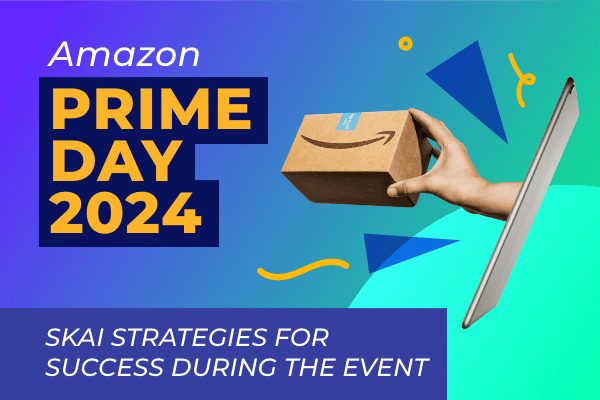Summary
Navigating the post-cookie era demands innovative ad creative strategies to engage and captivate audiences without relying on third-party data. Marketers can craft personalized messaging that resonates by leveraging data-driven insights, exploring new content formats, and continuously testing creative approaches. This is the fourth in our series about the cookieless future.
Read the entire Adapting to a Post Cookie World series
- Crafting a Winning Post-Cookie Game Plan: Three Essential Principles
- How to Adapt Research and Planning for the Post-Cookie Marketing Landscape
- Precision Marketing in the New Age: Targeting and Bidding Beyond Cookies
- Redefining Ad Creative and Personalization Best Practices in the Post-Cookie World
- Making Marketing Measurement and Optimization Work Without Cookies
Welcome back to our Adapting to a Post-Cookie World series, a resource for marketers and advertising professionals navigating the significant changes in our industry. While many industry news outlets discuss the reasons behind the deprecation of third-party cookies, there still needs to be a significant gap in practical guidance on how marketers can effectively navigate this transition.
So far, we’ve shared three tenets on how marketers can navigate a cookieless future, how best to approach privacy-conscious research & planning, and how to address bidding & targeting strategies without third-party data.
Today, we explore the impact on creative — including ad copy, messaging, headlines, display ad design, etc. As discussed in our last post, the depreciation of third-party cookies significantly affects traditional online targeting capabilities. The close relationship between targeting and creativity means that crafting bespoke messaging that resonates and moves the needle becomes more challenging without the ability to target specific groups based on behavior and demographics.
In essence, when you have no idea who is on the other side of that ad impression, you have no way to personalize the messaging. However, keeping your creative performing is not an insurmountable challenge in a post-cookie world. It will require innovative strategies to engage and captivate the audience. The key to creating content that feels personal while respecting privacy is using data-driven insights for creative personalization, exploring new formats and platforms for content distribution, and continuously creative testing and learning. These strategies, when implemented effectively, can lead to successful outcomes.
When you have no idea who is on the other side of that ad impression, you have no way to personalize the messaging

Here are a few ways to embrace change to craft a consistent, always-on-creative strategy while still respecting privacy.
Losing third-party cookies limits personalization
With third-party cookies, creative agencies were able to churn out limitless variations of ads targeted to every customer segment. However, the decrease in data-driven personalization in the post-cookie era means that marketers will have to rely on more generic messaging to their entire audience via a one-size-fits-all creative approach. As many marketers move to a more universal approach to creative strategy, the challenge becomes adapting campaigns to focus on broad audience appeal without sacrificing the personal touches that differentiate a brand and increase engagement.
- Consider thematic campaigns that will resonate with all audiences. Focus on brand differentiation and value.
- Create scalable, adaptive content that appeals to users on various platforms and can then adjust to user interactions on your platform. For instance, consider using dynamic content that changes based on the user’s behavior, preferences, or content that allows users to engage with your brand in a more personalized way.
How walled gardens can help: Even after third-party cookies disappear, walled gardens like Google, Meta, Amazon, Apple, and other closed ecosystems will still know who their logged-in users are. Therefore, they will still be able to offer highly granular targeting segments, enabling you to match ad creatives with those specific groups effectively.
Limited tracking makes it difficult to maintain brand consistency
Maintaining consistent brand voice and messaging is crucial to a full-funnel marketing strategy in an omnichannel world. However, limited tracking makes maintaining brand consistency across various platforms and content types challenging.
With third-party cookies deprecated, marketers will not only lack transparency about who their ads reach but also where in the customer journey they are. Your ad could be in front of a die-hard loyalist to your brand or someone who has never heard of you. They might just be about to order something or at the beginning of their purchase path.
- Develop strict brand guidelines that establish brand voice and focus on differentiation and value across platforms wherever your ads run.
- Use centralized creative management tools that help measure omnichannel campaign performance. Look for tools that measure performance across platforms and devices, offering insights for real-time adjustments to enhance campaign performance.
How walled gardens can help: Walled gardens provide robust content management and publishing tools that streamline content creation and distribution including reach and frequency capping. This helps ensure your brand voice remains consistent across various platforms and content types. These ecosystems’ unified design and user interfaces deliver a consistent user experience, reinforcing brand recognition and recall as users regularly encounter your ads in familiar and predictable environments.
A cookieless world makes it more challenging to discover new brands
In the past, cookies allowed advertisers to track users’ online activities across different websites by analyzing browsing patterns, interests, and interactions. This data enabled advertisers to build detailed profiles of users and identify potential customers. The lack of access to third-party data makes it harder to ensure content reaches the intended audience at the right time through organic channels. Without third-party data, marketers may see reduced effectiveness in content distribution, impacting overall campaign reach and engagement.
To combat reduced visibility, it’s important to adopt new strategies and leverage first-party data to create personal connections with audiences.
- Optimize SEO: Increase visibility across organic channels by researching keywords and providing valuable resources. This helps educate audiences, establish clear brand value, and optimize content for AI-enhanced search. Search engines like Google use AI to better understand user intent, context, and language nuances. Brands should future-proof their strategies for AI-powered algorithms by focusing on high-quality, relevant content that addresses user needs and search intent.
- Explore Influencer Partnerships: Collaborate with influencers and content creators to amplify reach and appeal to new audiences who increasingly rely on recommendations from trusted sources to discover new products and brands.
- Focus on Virality: Differentiate your brand from competitors by creating content that stands out. For example, Liquid Death founder Mike Cessario used a $1,500 Facebook video to build a $1.4 billion canned water brand by targeting a Gen Z audience tired of wellness-influenced marketing around bottled water. His “anti-marketing” approach on social media differentiated Liquid Death from competitors and, with a relatively small investment, created a memorable brand presence.
How walled gardens can help: Millennials and Gen Z increasingly rely on social media for shopping recommendations. According to eMarketer, 43% of Gen Z shoppers begin their product searches on TikTok. At the same time, a 2023 Statista report found that 94% of millennials have purchased a product after seeing it on social media.
Leveraging the power of promotional tools within walled gardens, such as boosted posts and sponsored content features, increases visibility and engagement with audiences who are likely already looking to the platform to discover new products and brands.
Lack of measurement halts important feedback on if creative is working
Without detailed tracking data, measuring the direct impact of creative strategies on engagement and conversion becomes more complex. Optimizing creative content for better performance without clear metrics necessitates several campaigns to understand which messages and ads effectively influence users to take action. This iterative process is essential but can lead to potential ad wastage and lower ROI if not appropriately managed.
- Develop a robust framework for A/B testing. To navigate these challenges, create a strong framework for A/B testing different creative approaches. AI can automate this process—from designing variations to analyzing results and implementing the winning option. This automation saves time and resources, enabling more frequent and efficient testing across campaign cycles.
- Use aggregated engagement metrics to guide creative development. By analyzing metrics such as likes, shares, comments, and click-through rates, brands can pinpoint which content resonates with their audience. This allows them to replicate successful elements in future campaigns, such as specific themes, formats, or styles.
How walled gardens can help: Leverage the detailed performance analytics provided by walled gardens to measure the effectiveness of different creative strategies. These platforms offer granular insights and real-time feedback, allowing for the refinement of creatives based on actual user engagement and behavior. This helps ensure that each campaign cycle builds on the previous one, leading to more effective and impactful creative content.
Adopting omnichannel tools to quickly identify trends across platforms can also help marketers get a more detailed overview of campaign performance overall. This can help teams invest in proven strategies and make adjustments based on big-picture feedback.
Coming up next
Now that you’ve created a killer content strategy, optimized bidding, and utilized tools to craft compelling creative, it’s time to measure your success.
Next week, we will explore one of the marketing areas that will be most affected by the deprecation of third-party cookies: measurement and optimization. We’ll offer ways to adopt privacy-friendly metrics and optimization techniques to generate a holistic campaign success overview.







